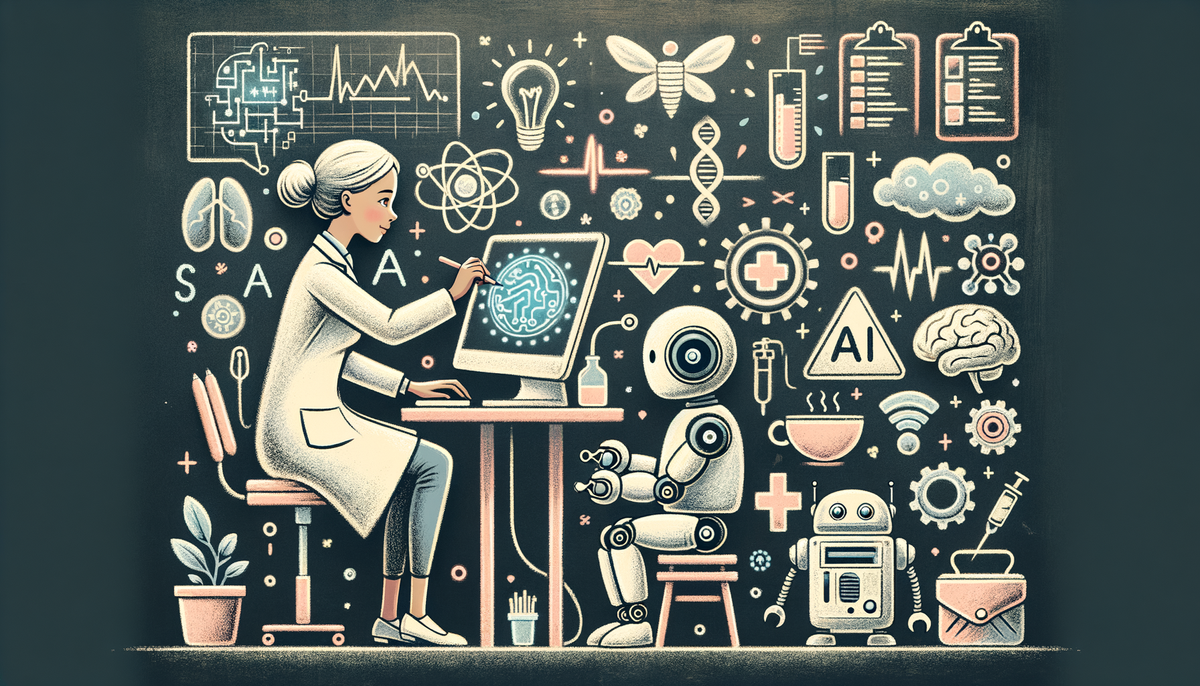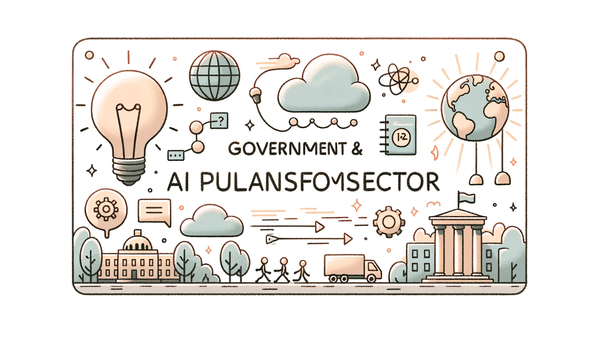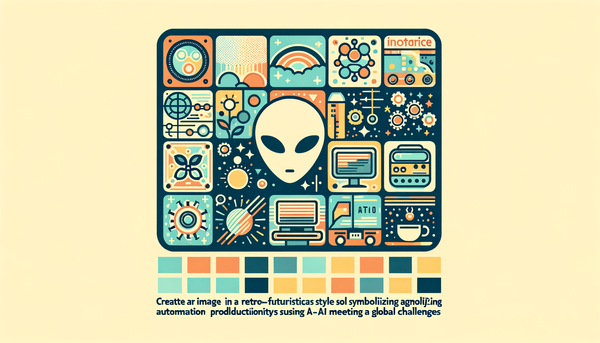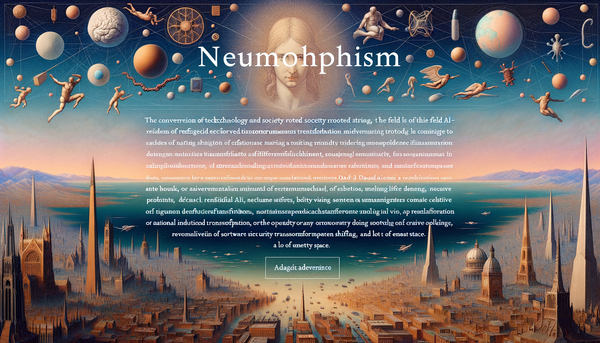Chinese AI Developments: Manus, Meta, Weather Models, Graphics Cards, and Oncology

AI's transformative impact is evident across diverse sectors—from revolutionizing cancer treatment to redefining energy trading and voice interactions—demonstrating not only technological prowess but also the evolving challenges and opportunities that accompany these breakthroughs.
Artificial Intelligence in Precision Oncology: Revolutionizing Cancer Care
In recent years, one of the most promising applications of artificial intelligence (AI) has been in the realm of precision oncology. A review published on Nature.com expounds on ten pivotal contributions that AI is making in this field, dividing them into three core areas. Firstly, AI is playing a crucial role in cancer prevention and diagnosis. Through sophisticated algorithms and deep learning techniques, AI-enhanced tools are now capable of precise screening and detection of tumors, effectively identifying cancer profiles that were once difficult to discern. This ability to analyze complex imaging and molecular data fosters early intervention and tailored treatment strategies, thereby potentially saving lives.
Secondly, the technology is transforming treatment optimization. Predictive models that forecast patient outcomes are enabling doctors to craft personalized treatment plans. By simulating numerous scenarios, these models assist in planning and monitoring therapeutic regimens with enhanced accuracy. This advancement is not merely academic; clinical trials are being designed with greater precision, matching patients to therapies that have the highest likelihood of efficacy. What is particularly promising is how AI can streamline the clinical trial process, reducing both the time and resources required while increasing the precision of patient selection.
Finally, AI is catalyzing the development of new therapeutic interventions. Data-driven discoveries are uncovering novel treatment combinations and identifying subtle cancer vulnerabilities that might escape human notice. Companies and research institutions alike are harnessing AI to design innovative drugs, potentially accelerating the time-to-market for therapies that could dramatically improve patient outcomes. Yet, despite these impressive strides, challenges remain—especially those related to data quality, model accuracy, and the practical clinical benefits that can be derived from these advanced tools.
"Artificial intelligence is not a substitute for natural intelligence, but a powerful tool to augment human capabilities," reminds us Fei-Fei Li, a quote that encapsulates the delicate balance between human insight and machine efficiency. Overcoming obstacles such as inconsistent data sets and ensuring clinical relevance is key to realizing the full potential of AI in oncology. As AI.Biz has previously highlighted in its piece on healthcare innovations, integrating AI into medical practice requires both technological advances and significant adaptations in clinical workflows.
Meta’s Pioneering Voice-Powered AI: The Advent of Llama 4
Shifting gears from healthcare to consumer technology, Meta Platforms Inc. is poised to disrupt the voice-powered AI arena with its latest innovation, Llama 4. As the digital landscape increasingly embraces natural language interactions, Meta’s ambitious project is noteworthy—especially given its commitment to investing a staggering $65 billion in AI for 2025. In an era where social interactions are largely mediated through text and static commands, Llama 4 is engineered to foster seamless voice conversations that mimic genuine human interaction.
This cutting-edge AI agent is not just an upgrade; it represents a shift from traditional static interfaces toward more dynamic, conversational experiences. Meta’s Chief Product Officer Chris Cox describes Llama 4 as an “omni model” capable of processing voice inputs with a level of nuance that elevates the user experience. Imagine discussing your next travel plans, arranging dinner reservations, or even effortlessly interacting with your smart home devices—all through natural, fluid conversation.
Meta’s vision extends beyond simply enhancing its social media ecosystem. The company envisions a future where every enterprise, irrespective of scale, can deploy an AI representative to streamline customer interactions and automate critical tasks. This is particularly exciting given the wide-ranging implications for industries such as retail, hospitality, and customer service. With AI’s ability to manage routine inquiries and assist with everyday decision-making, businesses are likely to experience significant improvements in efficiency and innovation.
For deeper insights into the dynamics of AI in consumer technology and the transformative potential of such voice-powered models, readers may also explore related updates on AI innovations in the piece AI Innovations Shaping Our Future.
AI in Weather Forecasting: A Game-Changer for Energy Trading
In another fascinating application of AI, advancements in weather forecasting are poised to capture global attention—especially within energy markets. Reports from both Yahoo Finance and Bloomberg reveal that a new AI-driven weather model is already altering how energy is traded across Europe. Traditionally, traders have depended on supercomputers to generate weather forecasts, yet these models often lack the granularity and speed needed to adapt to sudden changes in atmospheric conditions.
The newly developed AI model, emerging from pioneering research efforts in Bologna, Italy, and later highlighted by Bloomberg, not only integrates real-time atmospheric data but also assimilates historical weather patterns to forecast key variables such as temperature fluctuations, precipitation, and solar output. Remarkably, these forecasts extend accurately up to two weeks in advance, empowering energy traders to make far more informed decisions concerning pricing and investment strategies. The model’s ability to optimize energy supply and demand in a climate marked by extreme weather events signals a revolution in the trading strategies of energy companies.
Anecdotally, this breakthrough is akin to switching from an old, slightly reliable wristwatch to a state-of-the-art smart device—suddenly, every tick resonates with precision. With renewable energy sources like solar and wind being highly dependent on weather, accurate forecasting is a linchpin for market stability. The implications extend beyond just improved trading outcomes; they represent a shift towards a smarter, more data-driven operational model for energy markets.
Notably, this development reinforces the balanced coexistence of traditional forecasting methods and contemporary AI approaches. Rather than rendering older methods obsolete, the fusion creates a complementary system where AI levels bolster the overall accuracy and reliability of predictions. For those interested in broader implications of AI in various sectors, our article on AI Innovations Transforming Our World offers a deeper exploration into similar transformative trends.
Consumer Electronics and the AI Edge: From GPUs to Smartphones
The realm of consumer electronics is also experiencing an AI-fueled metamorphosis. Recently, AMD unveiled its Radeon 9070 and 9070 XT graphics cards, offering not just robust performance for 1440p gaming but also cutting-edge AI upscaling features. Similarly, innovations across other tech segments, such as the launch of the stylish yet affordable Nothing Phone 3a Pro and the revamped Apple M4 MacBook Air, underscore the rapid convergence of AI and everyday technology.
Graphics cards have traditionally been the domain of gamers and professional content creators, but with built-in AI upscaling, these devices can now significantly enhance visual quality in real-time. By leveraging AI to reconstruct high-resolution images from lower-quality inputs, these GPUs deliver smoother visuals and better performance during intensive tasks, effectively bridging the gap between high-end and mainstream computing. The story of the Radeon 9070 XT is illustrative—it represents how a balanced blend of cost-efficiency and technological advancement can deliver improved ray tracing capabilities while keeping the price in check.
This sector is reminiscent of the frenzy seen in other areas of technology—for instance, the chaos of trying to secure a high-demand graphics card when they are subject to price surges and scalping, an experience not unfamiliar to many tech enthusiasts. Much like the excitement and occasional frustration in the consumer market, these innovations highlight the symbiosis between technology and user demand. Recent updates from Engadget, which discussed not only GPUs but also upcoming action cameras from brands like GoPro and DJI, further illuminate the interconnected advancements across the tech landscape.
Moreover, these developments are paving the way for broader incorporation of AI in consumer devices. Imagine smartphones that adapt to user behaviors in real-time, or laptops that automatically optimize performance based on the current workload. The increasing presence of AI in these devices is less about replacing human creativity and more about enhancing user experience, epitomizing the philosophy that “Artificial intelligence is a tool, not a replacement for human intelligence,” as stated by Stephen Hawking.
The Rise and Challenges of AI Agents: A Close Look at Manus
Not all stories in the AI sector are marked by unbridled success; sometimes, rapid popularity brings its own set of challenges. Manus, an emerging AI agent from China, serves as a case in point. Initially hailed as a breakthrough reminiscent of DeepSeek’s innovations, Manus quickly gained notoriety among tech aficionados and investors. However, the overwhelming demand soon revealed significant capacity issues. With a serious shortage of server resources, many eager users found themselves unable to access even a demo-level version of the product.
This scenario, widely reported in the South China Morning Post, underscores the pitfalls that often accompany rapid success in the tech world. The scarcity of invitation codes and subsequent scalping on secondary marketplaces raised eyebrows and spurred debates on whether these tactics were an intentional part of the marketing strategy. Zhang Tao, a product partner for Manus, publicly acknowledged the challenges in a detailed apology, confessing that the team had grossly underestimated the appetite for such a product.
These early missteps highlight an important lesson: the technological promise of AI must always be matched by robust infrastructure and scalability strategies. While the potential for a general-purpose AI agent like Manus is tremendous, the journey from a prototype to a fully realized product is fraught with technical and logistical hurdles. As co-founder Ji Yichao works diligently to address these issues and restore user confidence, the situation calls for a broader reflection on how startups and tech giants alike can balance innovation with operational readiness.
The Manus case serves as a microcosm of the broader challenges within AI innovation. It emphasizes the importance of building scalable solutions and underscores the inherent tension between hype and reality—a vital consideration for investors, developers, and users alike. This underlines a common refrain in the tech community: that every monumental breakthrough must be accompanied by solid infrastructure to truly realize its promise.
Interdisciplinary Insights and the Road Ahead
Diving deeper into these varied narratives—from precision oncology and voice-powered AI to weather forecasting and consumer electronics—a clear pattern emerges. Artificial intelligence is not limited to a single domain; its transformative potential permeates multiple aspects of our lives. One can't help but appreciate how AI weaves together intricate data patterns to create functionalities that were once reserved for science fiction. Whether it’s predicting cancer patient outcomes, enabling naturalistic conversations with smart devices, or forecasting weather with unprecedented accuracy, the underlying theme remains the amplified efficiency and innovative reimagination of conventional processes.
With the convergence of technologies, the boundaries between disparate fields are blurring. For example, the same deep learning techniques employed in cancer diagnostics are being adapted to analyze energy consumption patterns or enhance real-time graphics processing. This cross-pollination of ideas not only accelerates technological evolution but also paves the way for entirely new industries and business models. It is indeed a testament to the vision that "AI is a tool. The choice about how it gets deployed is ours," as Oren Etzioni insightfully noted.
Furthermore, collaborations between tech giants, startups, and academic institutions are crucial. Whether it's Meta revolutionizing voice interactions or European meteorologists unlocking new weather forecasting capabilities, cross-industry partnerships are the crucibles in which innovation is forged. Researchers from various fields are increasingly pooling resources and expertise, often leading to breakthroughs that a single entity may not have been able to achieve alone. Such synergies reflect the layered narrative of our technology-driven era, where interdisciplinary endeavors are the norm rather than the exception.
This convergence is also reshaping business strategies. Companies are recognizing that investments in AI can yield significant dividends—not only in terms of operational efficiency but also by redefining customer engagement models. For instance, the ability to offer AI-enhanced customer service or predictive maintenance in industrial sectors could soon become a standard expectation.
It is important, however, to maintain a balanced perspective. As we witness these paradigm shifts, critical assessments of AI’s implementation and its broader societal implications remain essential. Such vigilance ensures that while we embrace innovation, we also safeguard ethical considerations, transparency, and equitable access—cornerstones that will secure AI’s promise for future generations.
Further Readings and Continuous Updates
The exploration of AI’s multifaceted applications is an evolving narrative. For ongoing updates and deeper insights into this vibrant field, you might find additional perspectives in our related articles. For a dive into how AI is enhancing healthcare innovations, refer to the update on Testing Healthcare Innovations. For broader discussions on the disruptive force of AI and its societal impacts, consider reading AI Innovations Shaping Our Future and New AI Innovations and Controversies. Lastly, discover how AI is transforming our daily lives in our piece on AI Innovations Transforming Our World.
These articles provide valuable context and illustrate that while challenges remain—from server bottlenecks in products like Manus to data integration issues in precision oncology—the AI revolution is far from stalling. Innovations in voice interaction, enhanced weather predictions, and even next-generation consumer electronics set the stage for an exciting future where digital and physical worlds intermingle seamlessly.
Reflections on the AI Journey
Looking back at the transformative stories spanning from groundbreaking medical diagnostics to dynamic voice AI, it is fascinating to witness how artificial intelligence serves as a catalyst for progress. The narrative of AI is replete with both promises and pitfalls, serving as a constant reminder that technological excellence and practical utility must evolve hand in hand.
One particularly striking takeaway is the lesson learned from precision oncology—advanced predictive algorithms and comprehensive data analysis can save lives when integrated into clinical workflows, albeit with the reminder that accuracy and reliability must continually be improved. Similarly, Meta’s bold leap with voice-powered AI underlines that the future of how we interact with the digital realm is fast approaching, and businesses must prepare to adapt to these fluid communication models.
Additionally, the energy trading sector exemplifies the direct financial and operational benefits of adopting AI, where timely and precise weather predictions empower the market to stabilize amid volatile conditions. Such achievements illustrate that the interplay between AI technology and industry-specific challenges is both inevitable and invaluable in carving out a data-driven future.
“AI is a tool. The choice about how it gets deployed is ours.”— Oren Etzioni, Machines Like Us: Toward AI with Common Sense
Every sector chronicled here, from healthcare to consumer electronics, corroborates the view that AI's promises extend beyond automated responses or enhanced efficiencies—they reflect a deeper evolution in how we manage, interpret, and leverage complex information. This continuously unfolding narrative is not just about technological triumph, but about our collective journey toward smarter, more responsive, and more interconnected systems.
As we continue to embrace these technological shifts, it is crucial to foster an environment where innovation is met with pragmatism. Recognizing the successes and addressing the shortcomings—be it through scaling server capacities for AI tools like Manus or refining patient-specific models in oncology—remains the core of ensuring sustainable growth within the AI ecosystem.
Looking Forward
In closing, the ongoing evolution of artificial intelligence is setting the stage for an era that redefines efficiency, personalization, and connectivity across industries. The interplay between cutting-edge research, strategic investments, and real-world applications is driving a dynamic transformation in technology that is far-reaching and impactful.
From the precision required in cancer treatment to the conversational fluidity of modern voice assistants, and from the detailed precision in weather prediction benefitting energy markets to the innovative integration of AI in everyday consumer devices, the journey of AI is nothing short of revolutionary. The challenges that arise in this rapid innovation cycle only serve to underscore the relentless pursuit of excellence—a pursuit that continues to compel researchers, developers, and business leaders alike.
As we chart this course, continuous collaboration and rigorous evaluation will be crucial. Only through a balanced blend of technological ambition and practical application can the full spectrum of AI's potential be realized. Every breakthrough and every setback provides valuable insights, shaping a future where artificial intelligence not only augments human capabilities but also contributes to a more resilient, informed, and interconnected world.
This unfolding story is one of adaptation, perseverance, and visionary thinking—a story that reminds us that as we forge ahead, the true power of AI lies in its ability to transform ideas into practical solutions that benefit communities worldwide.




